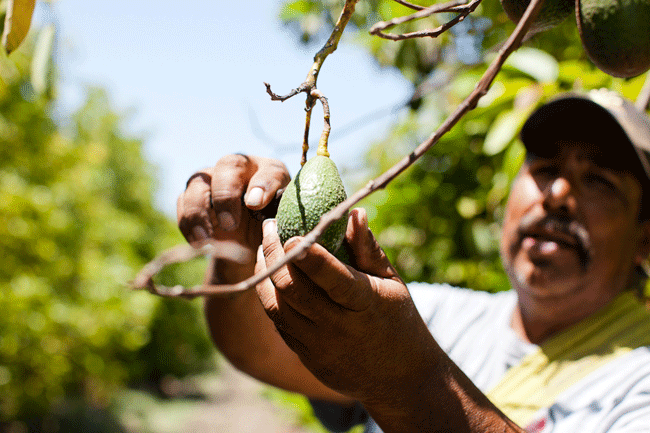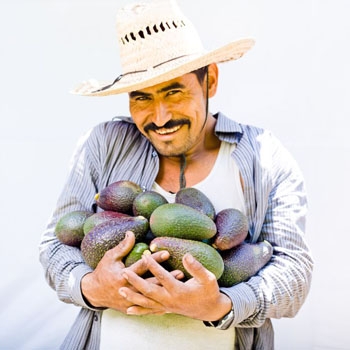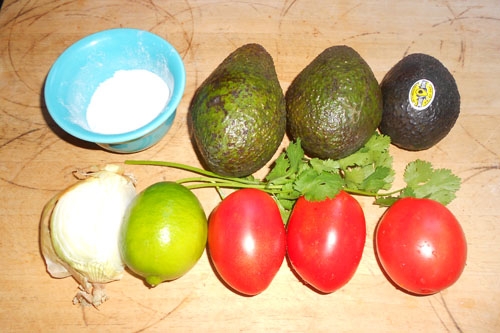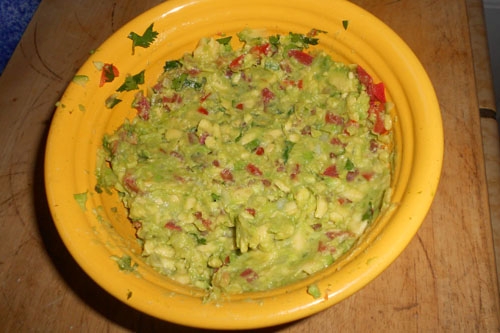
Posts Tagged: South Coast Research and Extension Center
Thanksgiving persimmons are autumn joy
When the weather cools in the fall and the holidays draw near, orange orbs ripen on persimmon trees in California to offer a fresh autumn sweetness in time for Thanksgiving recipes and holiday décor.
At the UC South Coast Research and Extension Center (SCREC) in Irvine, a collection of 53 persimmon varieties are at their peak in November when the public is invited for tasting and harvesting at the annual persimmon field day.
“We want to raise awareness about persimmons,” said Tammy Majcherek, SCREC community educator. “It's a beautiful tree and a great addition to any landscape. Persimmon trees provide shade in the summer, healthy fruit in the fall, then drop their leaves and allow the sun's warmth to come through in the winter. It's a win-win situation as far as landscape trees go.”
The persimmon collection came to the research center in the 1960s, when the late UCLA subtropical horticulture professor Art Schroeder arranged to move his collection of persimmon varieties to another venue because the pressure of urban development at the Westwood campus became too great.
Persimmons are native in two parts of the world, China and the United States. The Chinese persimmon made its way to Japan, where its popularity soared. The American persimmon comes from the Southeastern United States, however, most California persimmons trace their lineage to Asia.
California leads the nation in persimmon production, according to the California Department of Agriculture Crop Report, but with a value of about $21 million in 2012, it represents just a small fraction of the state's $19 billion 2012 tree fruit and nut value.
Nevertheless, to the visitors who came out to tour UC's collection at SCREC, persimmon is a choice fruit. Participants on the early-morning VIP tour received a large shopping bag to fill with various varieties of fuyu and hachiya persimmons. Fuyu are flat, yellow-orange fruit that can be eaten right off the tree like apples or allowed to mature to a super-sweet soft pulp. Hachiya are redder, heart-shaped and astringent when not fully ripened. “If you bite it, it will bite your mouth right back,” said one participant.
However, after ripening to a jelly soft pulp or dried, the hachiya is equally delicious.
Shirley Salado, the UC Cooperative Extension Expanded Food and Nutrition Education Program supervisor in San Diego County, attended the persimmon tasting to gather fruit and information for her education program.
“The fuyu is great to eat,” Salado said. “When they ripen and become very soft, you can put the pulp in a blender and then freeze in zipper bags to add to healthy smoothies.”
Salado collected two large bags of persimmons to share with her nutrition education staff.
“Not everybody knows about these,” Salado said. “This gives them a chance to look at the fruit. This is what we promote.”
Following the tour, coordinator of the UC Master Food Preserver program at SCREC Cinda Webb demonstrated safe consumption by making cinnamon persimmon jam, dried persimmon chips, and a gourmet persimmon, basil, beet and rice salad.
Wild or brown rice persimmon salad
4 cups wild or brown rice, cooked
2 Fuyu persimmons, chopped
1 cup cooked, chopped beets
1 cup basic, chopped
8 oz feta cheese
½ cup orange cumin vinaigrette
Vinaigrette (makes about 1 cup)
½ cup orange juice
¼ cup olive oil
2 tsp rice vinegar
1 Tbsp maple syrup
1½ tsp cumin
1 tsp coriander
½ tsp salt
Directions
- Whisk together vinaigrette dressing ingredients
- Stir basil, beets, persimmons and feta into rice and toss with ½ cup vinaigrette.
- Top with persimmon slices and extra chopped basil for presentation.
South Coast REC research helps landscapers plan for the next drought
Covering the ongoing drought, Peter King wrote a story in the Los Angeles Times about different approaches being taken around the state to manage with less water. From desalination facilities to solar-powered telemetry towers to help improve irrigation efficiency in an almond orchard to water storage projects, the former UCOP news director highlighted a number of efforts to plan for a drier future. He ended up at UC ANR's South Coast Research and Extension Center, looking at the landscape project built for studying plant types and urban water use.
“Three beige classrooms have been outfitted and landscaped to resemble a row of suburban homes, complete with white picket fences,” King wrote. “They are not-so-poetically identified as residences A, B and C. A offers conventional landscaping: fescue lawn, birch trees and boxwood. B's plants and grasses are better suited to a Mediterranean climate. C's are natives: sedge grasses, manzanita and sycamores.”As the drought persists, requests from municipal landscapers and private gardeners to tour the project have picked up, Tammy Majcherek, a UCCE community educator in Orange County, told King.
“I am not sure the old mindset has changed,” she said, “but I think maybe we are beginning to turn the corner.”
Members of the public will have a chance to tour the faux neighborhood on Sept. 26 from 9 a.m. to 2 p.m. during the Urban Landscape & Garden Education Expo at South Coast Research and Extension Center. The event is free. Visitors will get to learn about drought friendly plants and how to reduce landscape water use. For more information, visit http://screc.ucanr.edu/?calitem=272378&g=68933.

SCREC landscape expo Sept. 26
Adding variety: avocados and guacamole

I have limited cooking skills, so I’m lucky that my wife is a great cook and an even better baker – lemon bars, anyone?
But there’s one dish she prefers that I prepare: guacamole. I was thinking about this when I was reviewing our recent photo shoot at UC ANR’s South Coast Research and Extension Center in Irvine, which included images of strawberries, citrus and avocados.
“Our whole goal is to make the industry in California more sustainable,” said UC Cooperative Extension specialist Mary Lu Arpaia, in the Department of Botany and Plant Sciences at UC Riverside.
Arpaia leads UC’s efforts to develop new avocado varieties. The dominant variety, Hass, started in 1926 in Southern California and has become so common globally that it could become generic, Arpaia said.
“My belief is the way we’re going to differentiate ourselves as a California industry and survive is by breeding something unique,” Arpaia said.
UC Riverside has developed several avocado varieties, signing a license agreement last year for its latest release, GEM. The great-granddaughter of the Hass avocado, GEM shares Hass’ desired characteristics such as a creamy, nutty flesh while offering growers additional benefits such as being a smaller tree that typically is more productive, Arpaia said.
Arpaia is evaluating more varieties. The next potential release is likely two to three years away, she said.
Meanwhile, Arpaia also is collaborating with the U.S. Department of Agriculture to improve the postharvest quality of avocados – how packing houses and distribution centers should handle the fruit, for how long and at what temperature.
“People definitely like fruit that is creamy, smooth, nutty and buttery. They like fruit that has a pleasant aftertaste,” said Arpaia, who conducts monthly avocado tasting panels at UC Riverside.
Packed with nearly 20 nutrients including potassium, avocados are an appetizing addition to salads and sandwiches. Arpaia likes them sliced, eaten alone, in a salad or on a warm corn tortilla. Some like them sweet in cheesecake or milkshakes. Of course, they’re best known as the base ingredient in guacamole.
I keep my guacamole simple: avocados (three), white onion (one-third), Roma tomatoes (three), lime (one), cilantro and salt. I start by scooping out the avocado pulp, slicing it into medium chunks and putting it in a bowl, mixing in lime juice. Then I dice the onion and tomatoes (seeded) into fine pieces and toss them in the bowl, followed by chopped cilantro. Next, I mash it up with a spoon, sprinkling on some salt and more lime juice. Test it and then serve.
For a spicier version, add garlic, jalapeños or serranos. The possibilities are plentiful. Just make sure you start with ripe avocados. What’s your favorite guacamole recipe?















